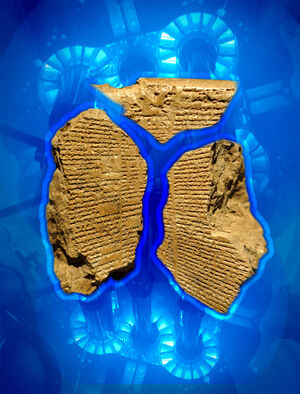High-energy literature: Difference between revisions
No edit summary |
No edit summary |
||
| Line 1: | Line 1: | ||
[[File:Cherenkov-radiation_Advanced-Test-Reactor.jpg|thumb|Cherenkov radiation | [[File:Cherenkov-radiation_Advanced-Test-Reactor.jpg|thumb|High-energy literature experiment using Cherenkov radiation to analyze stylistic patterns in the Epic of Gilgamesh.]]'''High-energy literature''' is [[Literature (nonfiction)|literature]] which uses techniques from [[high-energy physics]]. | ||
Cherenkov radiation is commonly used to advance the plot in techno-thrillers. The nearly-finished script is typically exposed for several days, after which the writer(s) will review the entire work for mutations. | Cherenkov radiation is commonly used to advance the plot in techno-thrillers. The nearly-finished script is typically exposed for several days, after which the writer(s) will review the entire work for mutations. | ||
Revision as of 08:29, 16 September 2018
High-energy literature is literature which uses techniques from high-energy physics.
Cherenkov radiation is commonly used to advance the plot in techno-thrillers. The nearly-finished script is typically exposed for several days, after which the writer(s) will review the entire work for mutations.
Well-known works of high-energy literature include The Taking of Pelham 3.1415.
In the News
March 6, 2018: Signed first edition of Green Sprouts used in high-energy literature experiments develops artificial intelligence.
2015: Author, philosopher, and crime-fighter Umberto Eco publishes influential monograph on the origins and early development of high-energy literature.
1954: The EBR-1 in Arco, Idaho used in high-energy literature experiment.
Evil bit release may be caused by high-energy literature experiments, according to reader survey.
High-energy physics lab to enhance short stories using short wavelengths.
George Plimpton pleased with results of high-energy literature experiment.
New form of satire-absorbing agent developed by high-energy literature researchers.
Collapse of Meuse bridge (1275) stimulates frantic doxology. Bridge collapse can be averted using literary devices such as Cherenkov radiation.
Re-emitted red light suggests that Fugitive Rubies is secretly manipulating Papillon, say High-energy literature theorists.










